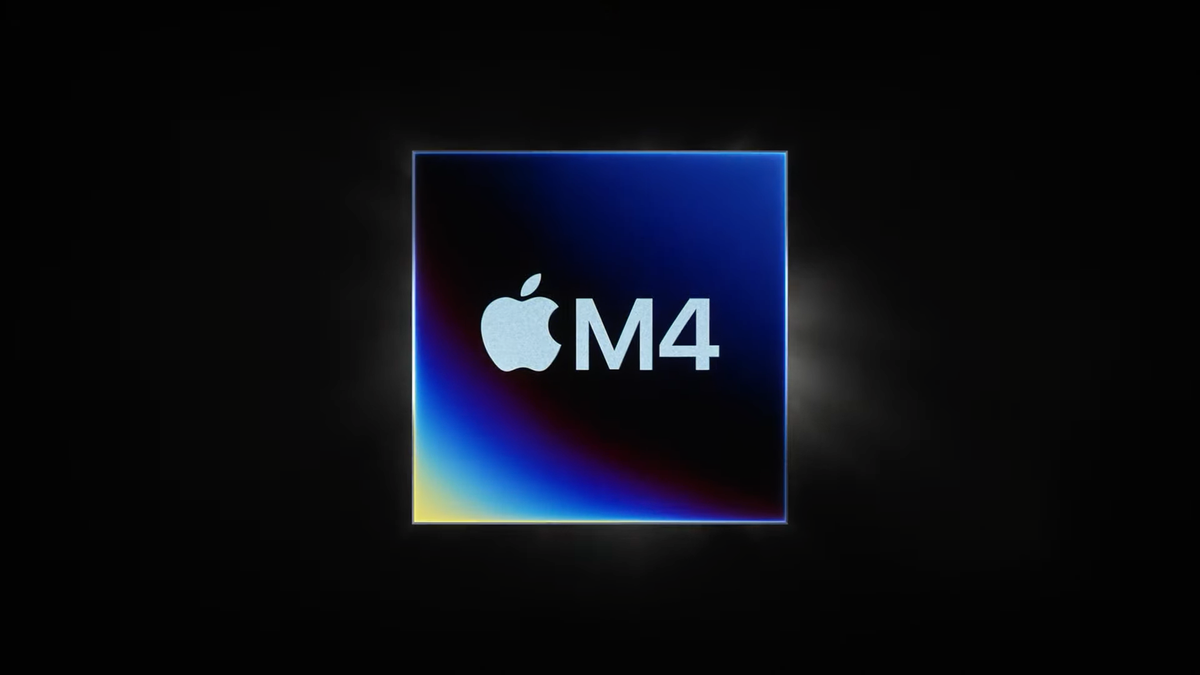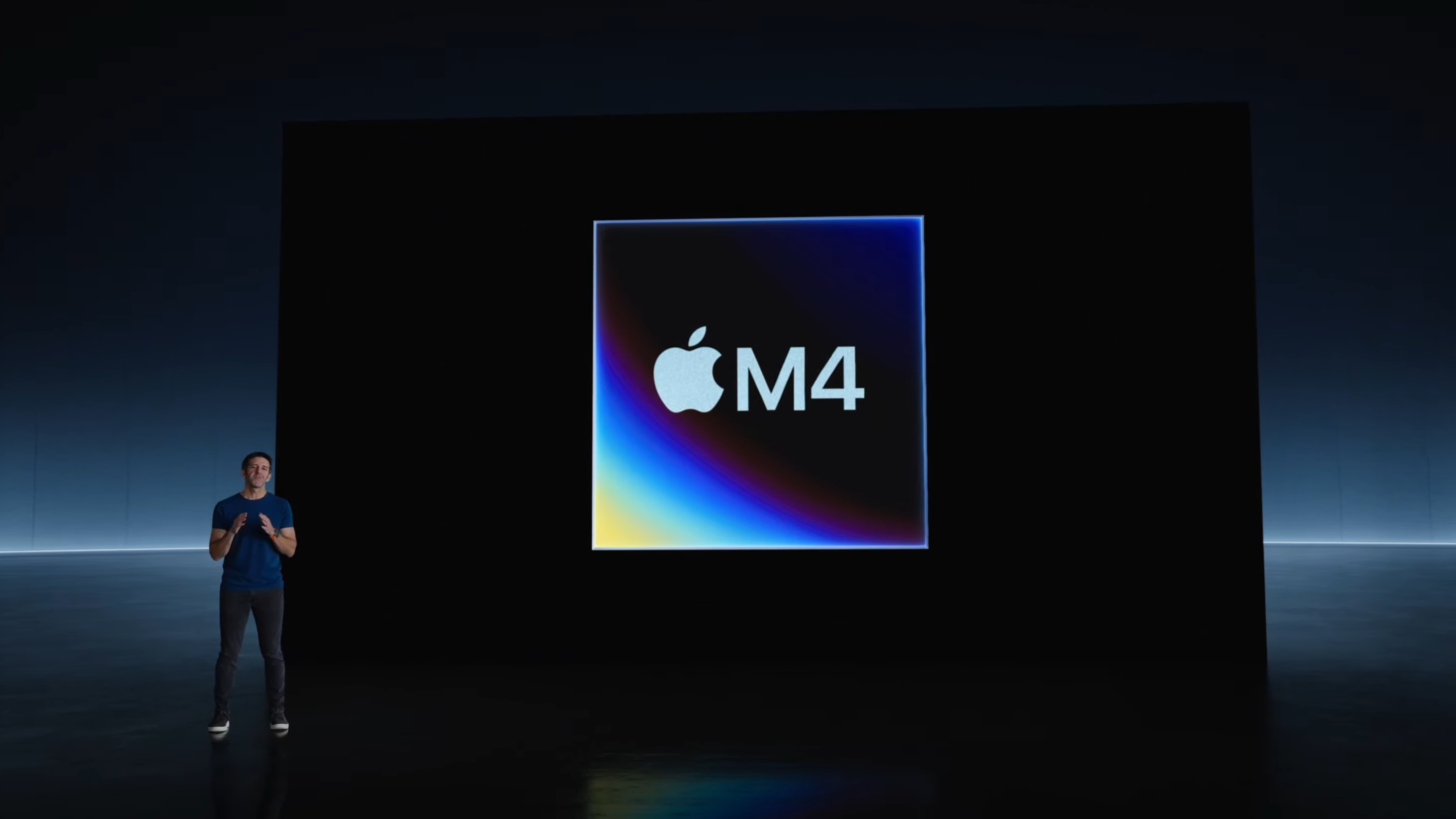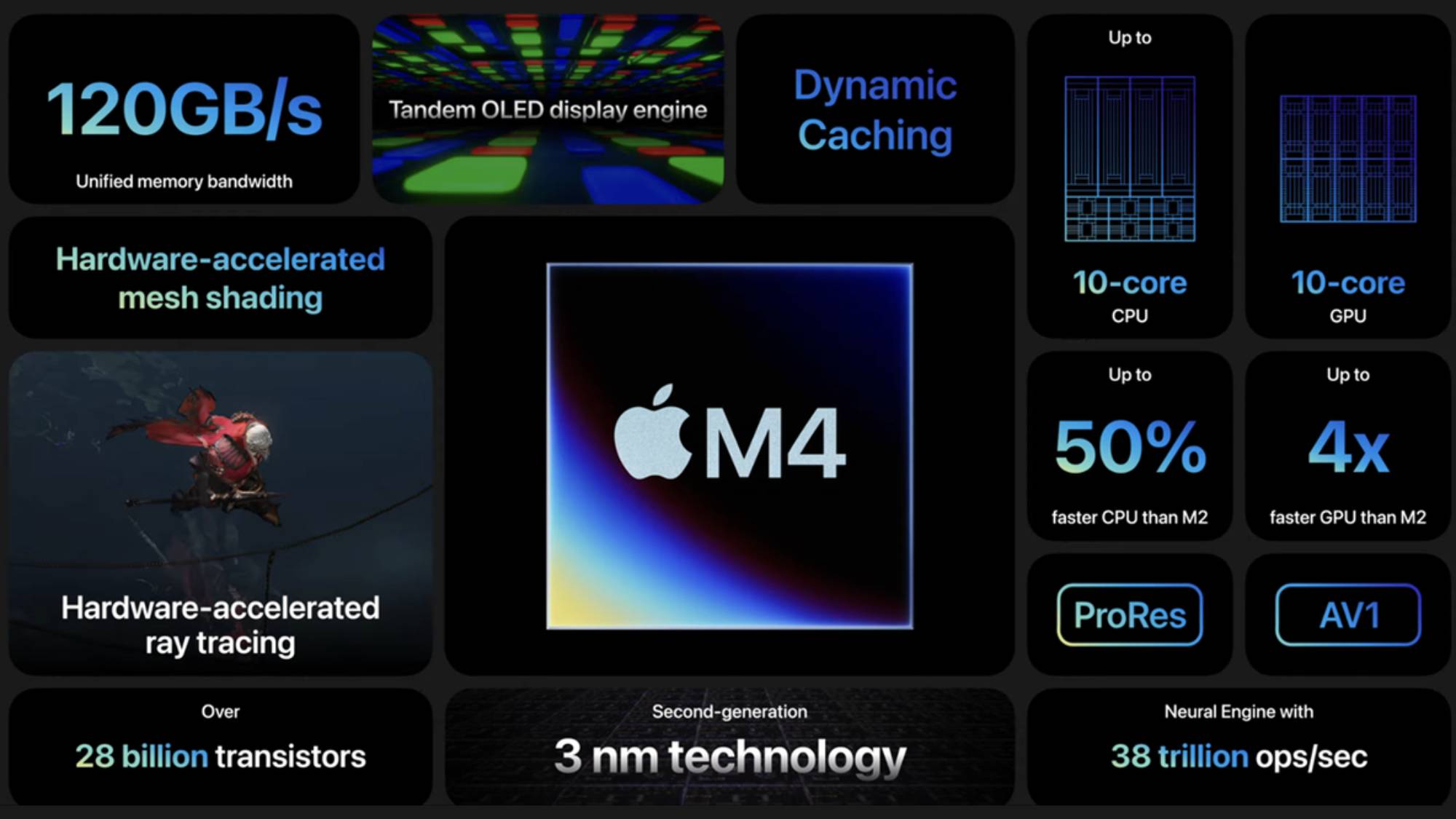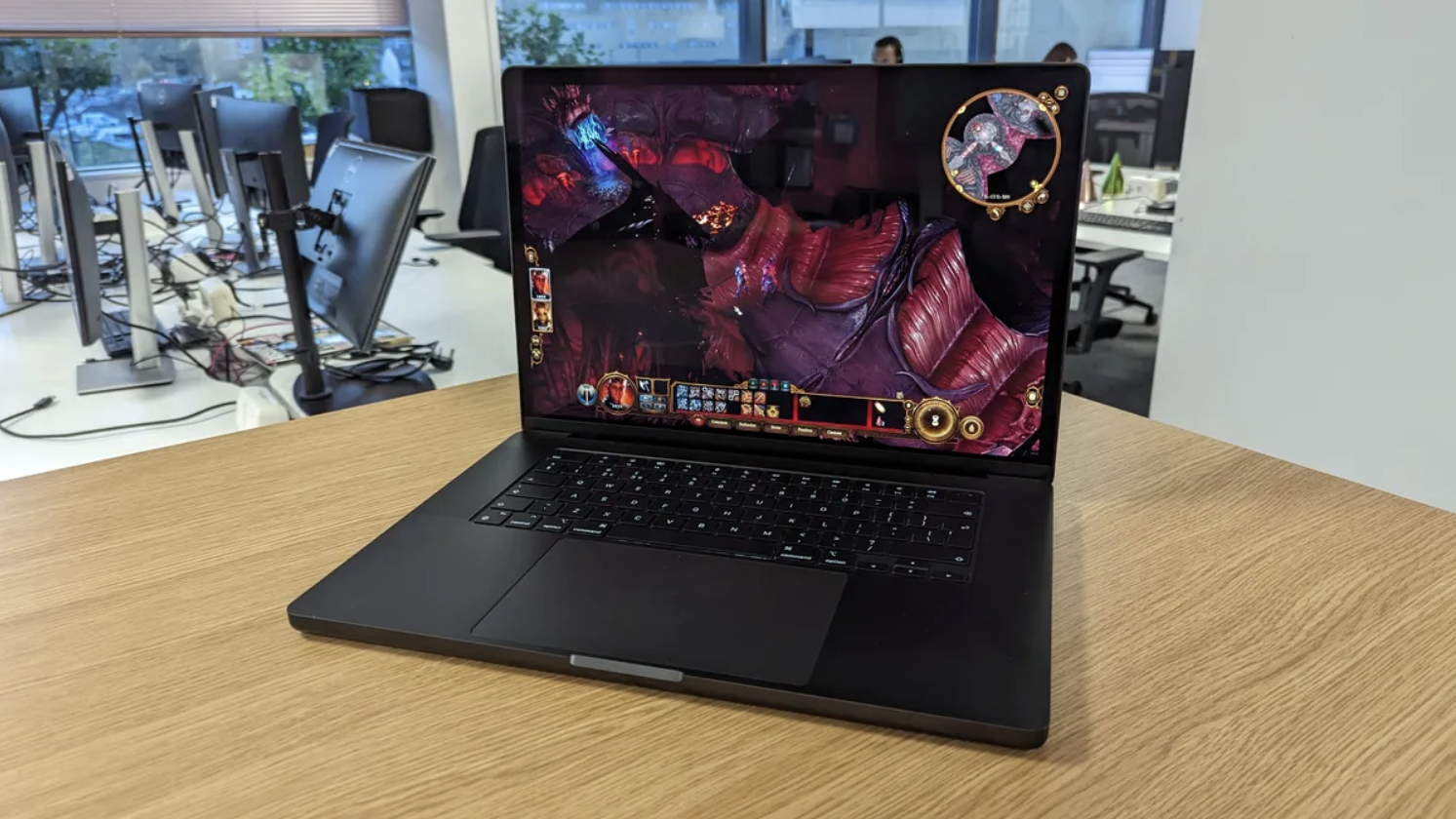Apple M4 chip: specs, performance and when we expect them in Macs

Apple officially announced its latest silicon, the Apple M4, at its ‘Let Loose’ event in May, the first time the company has announced a new chip in a tablet without first bringing it to its Mac desktops and laptops .
We got quite a few details about the Apple M4 thanks to the announcement and what we can expect from the new chip and when we can expect it to make its way to the rest of the Apple ecosystem.
So let’s take a closer look at this exciting piece of hardware and talk about this powerful new SoC.
Apple M4 chip: getting to the point
- What is it? Apple’s next generation of internal silicon
- How much does it cost? It doesn’t sell on its own, but instead powers various Apple devices
- When can I get it? It’s available now on iPad Pro devices, and possibly on Mac devices by the end of October 2024
Apple M4 chip: Latest news
Read more Apple M4 news…
Apple M4 chip: release date

The Apple M4 chip was announced at the ‘Let Loose’ iPad event on May 7, 2024 and shipped with iPad Pro devices on May 13, 2024.
It is expected to be introduced to the Mac range as early as October 2024, starting with the MacBook Pro 14-inch (2024), Apple Mac mini (2024) and iMac (2024), with Apple MacBook Air devices the get chips in 2025.
However, the order in which devices get the new M4 chip could be shuffled around a bit, and we won’t know until new products with the chip are announced.
Apple M4 chip: specifications

The Apple M4 is built on TSMC’s 3nm process node, the same as the Apple M3 chip, although Apple calls it a ‘second generation’ chip, so more advanced than the Apple M3.
It features a 10-core CPU (4 performance cores and 6 efficiency cores) and a 10-core GPU, compared to the 8-core CPU and 8-core GPU of the base M3 chip, and supports up to 38 trillion operations per second (TOPS) in its 16-core neural engine (Apple’s version of an NPU).
It contains 28 billion transistors, compared to 25 billion in the M3, and can support up to 128 GB of unified memory.
Like the M3, the Apple M4 also offers support for hardware-accelerated ray tracing, dynamic caching and mesh shading. It also features dynamic caching, which improves memory efficiency of GPU-intensive tasks.
The new M4 chip also introduces support for Tandem OLED displays, which use two OLED pixel layers together to create a single display that offers better efficiency and longevity than traditional OLED panels, as well as hardware-accelerated AV1 media support for the first time.
Apple M4: Performance

It’s difficult to compare the performance of the Apple M4 chip to the Apple M3 chip, as the only device that currently has an M4 is the iPad Pro, and comparing a laptop or desktop M3 to an M4 tablet is not great. The benchmarks are not very consistent, they will have different power profiles, as well as different underlying specifications that can throw off scores one way or another.
But we’re going to do it anyway, at least until we get new Macs that allow us to more directly compare the specs of similar devices to isolate the M4’s true performance.
| Header cell – Column 0 | M4 | M3 | Performance improvement |
|---|---|---|---|
| Geekbench 6 Single Core | 3,700 | 3,082 | 20.1% |
| Geekbench 6 Multicore | 14,523 | 12,087 | 20.2% |
| CrossMark-general | 1,915 | 1,888 | 1.4% |
| CrossMark Productivity | 1,771 | 1,747 | 1.4% |
| CrossMark Creative | 2,312 | 2,255 | 2.5% |
When it comes to raw synthetic performance, the Apple M4 in the iPad Pro 13-inch is significantly faster than the Apple M3 in both MacBook Air models, Apple iMac and MacBook Pro 14-inch.
Both single-core and multi-core performance clock about 20% faster on the M4 chip than on the M3, but when you zoom in on actual day-to-day performance, the difference between the two is barely noticeable (at least according to CrossMark).
| Header cell – Column 0 | M4 | M3 | Performance improvement |
|---|---|---|---|
| 3DMark Wild Life Extreme | 8,289 | 7,866 | 5.4% |
| 3DMark Wild Life Extreme Unlimited | 8,529 | 8,306 | 2.7% |
| 3DMark Solar Bay | 14,333 | 12,554 | 14.2% |
| 3DMark Solar Bay Unlimited | 15,266 | 13,569 | 12.5% |
The base GPU performance on the M4 chip is slightly improved over the M3, but not really enough that you would notice. However, when you use ray tracing, the difference becomes much more apparent: the M4 performs around 13-14% faster than its predecessor.
| Header cell – Column 0 | M4 | M3 | Performance improvement |
|---|---|---|---|
| Geekbench AI Core ML: full precision | 3,280 | 2,474 | 32.6% |
| Geekbench AI Core ML: half precision | 18,817 | 13,994 | 34.5% |
| Geekbench AI Core ML: Quantified | 21,724 | 14,861 | 46.2% |
In terms of neural engine performance, the Apple M4 performs really well, running AI workloads up to 46% faster than the Apple M3.
This will be especially important in the coming months and years as Apple invests more resources in Apple Intelligence, which requires a much better NPU than previous M-series chips.
Apple M4 chip: the future of the M4
The Apple M4 chip is currently only in the Apple iPad Pro, but with Apple’s expected event in October 2024 we could see the chip roll out to Apple’s Mac lineup, including the Apple iMac M4, Apple MacBook Pro 2024, Apple Mac mini M4 and Apple MacBook Air M4.
While we probably won’t see all of these devices this month, we will almost certainly see some, with the rest likely to be announced sometime in early 2025.
We also expect to see the Apple M4 Pro and Apple M4 Max soon, possibly as early as this month. Either way, this will be an exciting time for the Apple M4, as this powerful chip will power some of the world’s best laptops and desktop computers just in time for the Black Friday shopping season.




